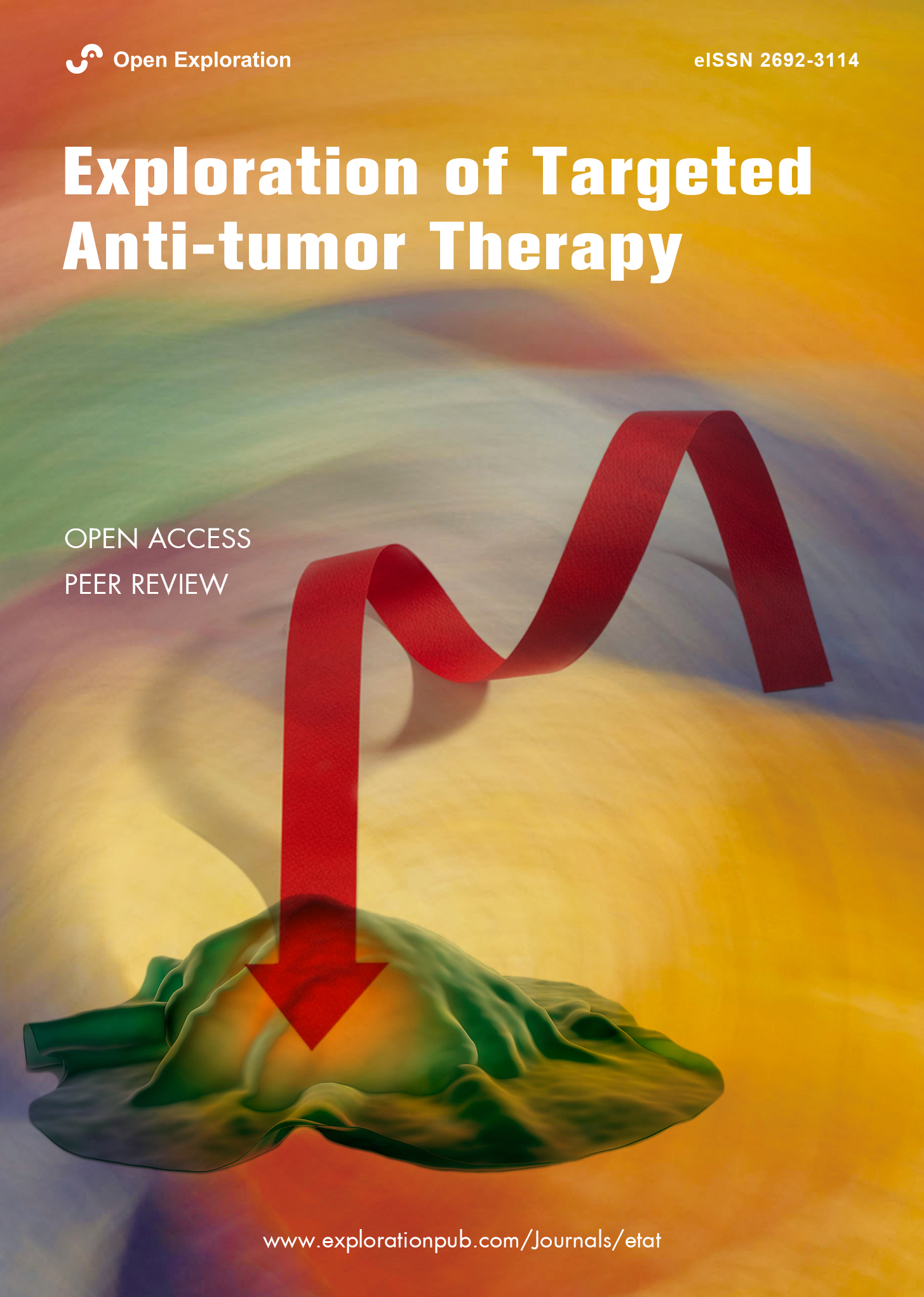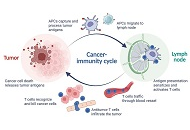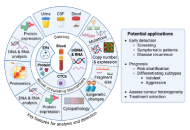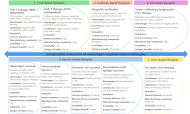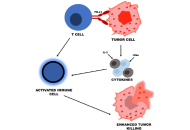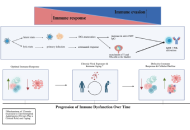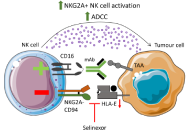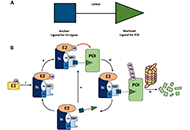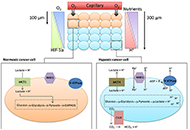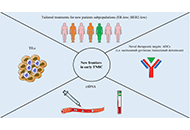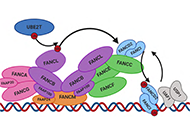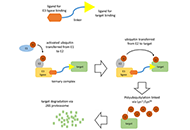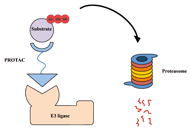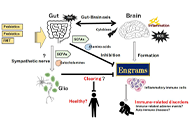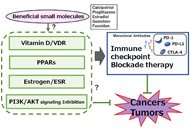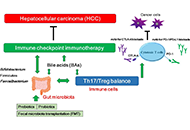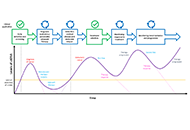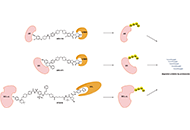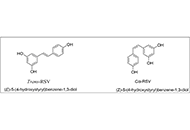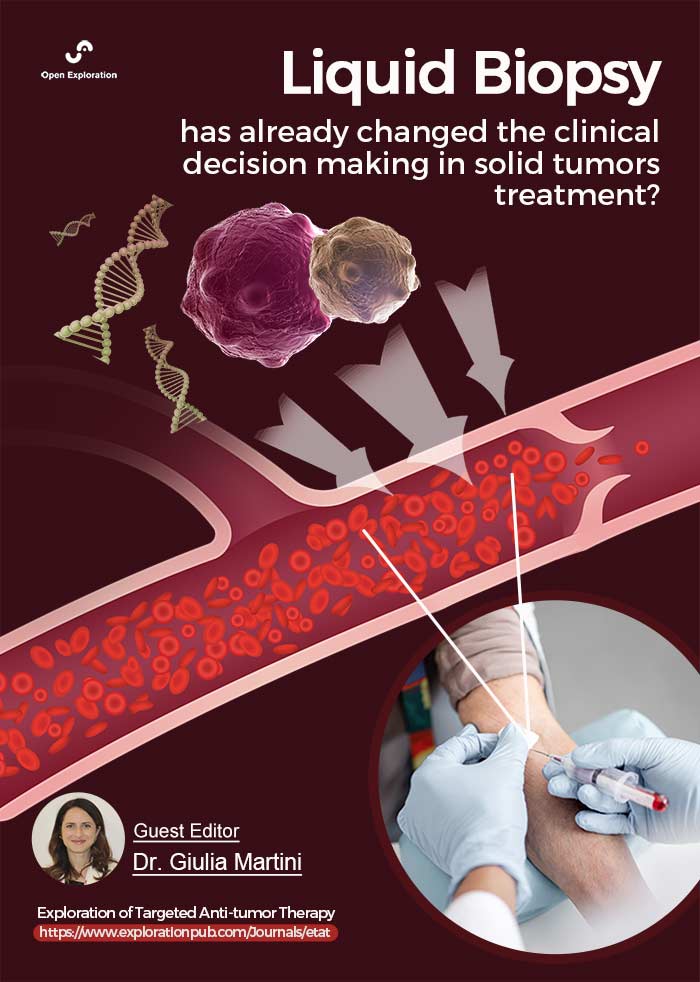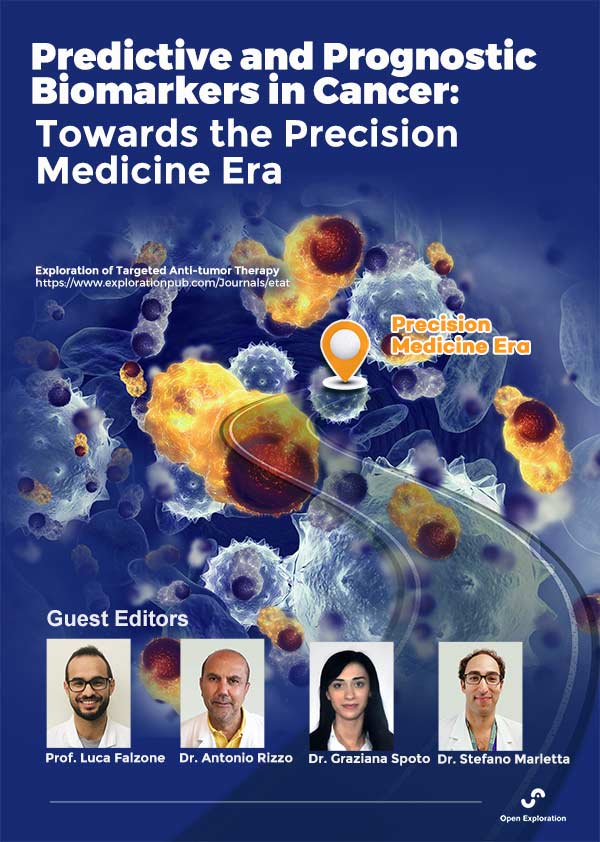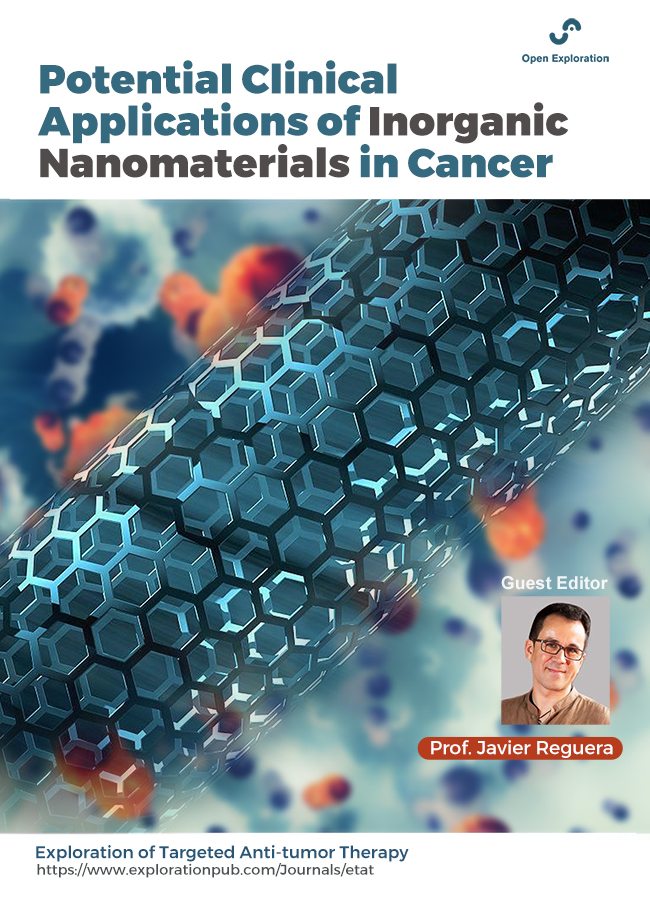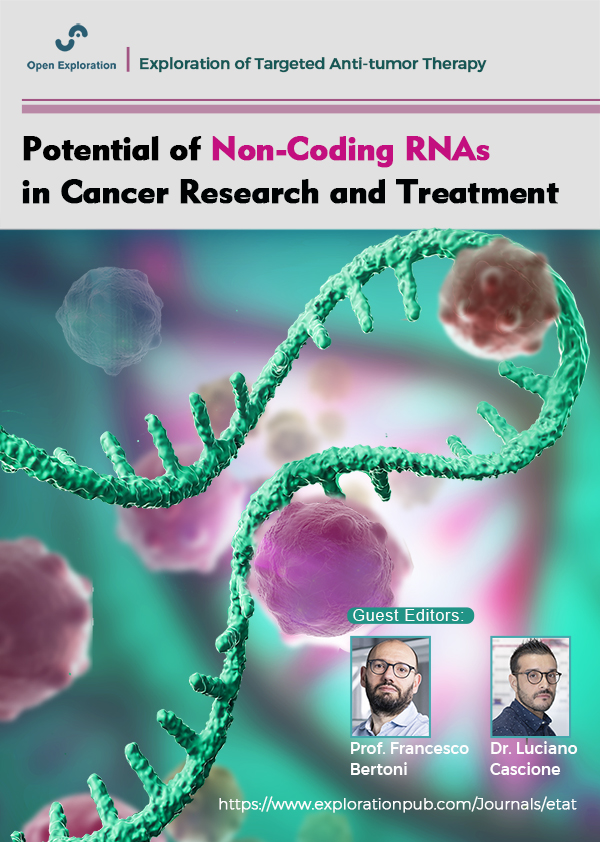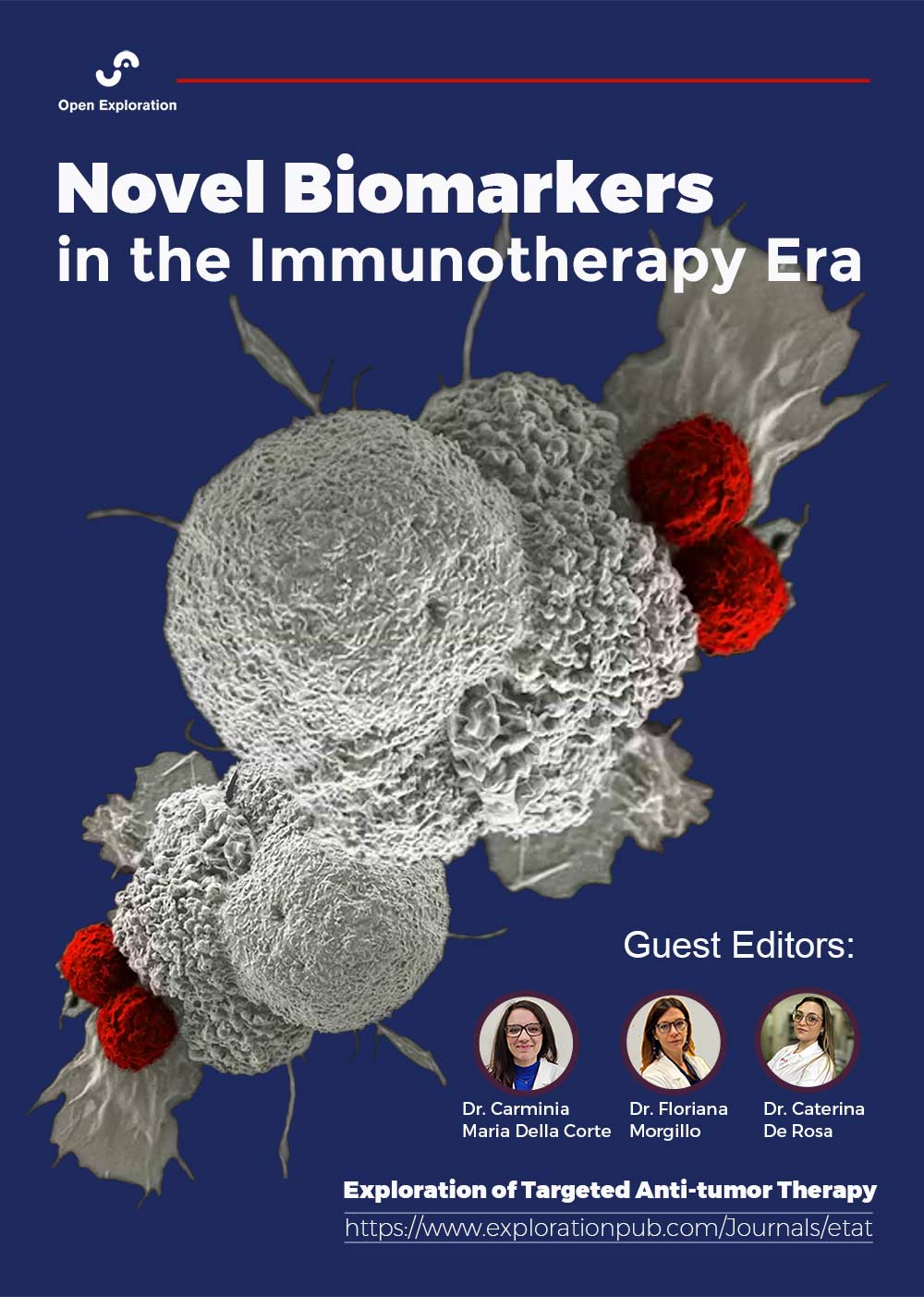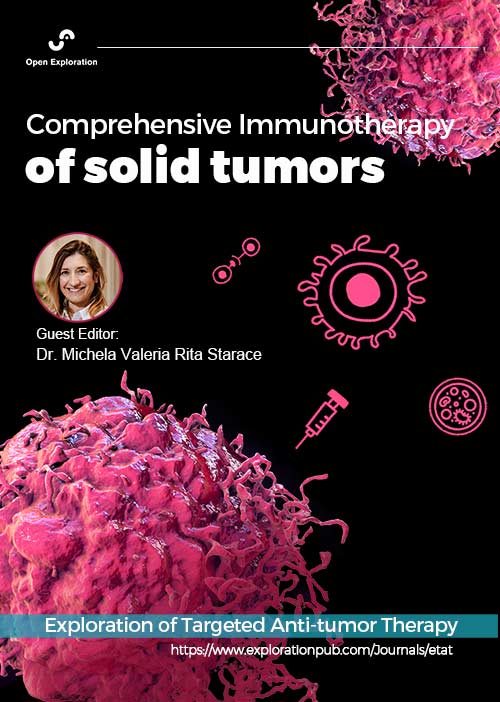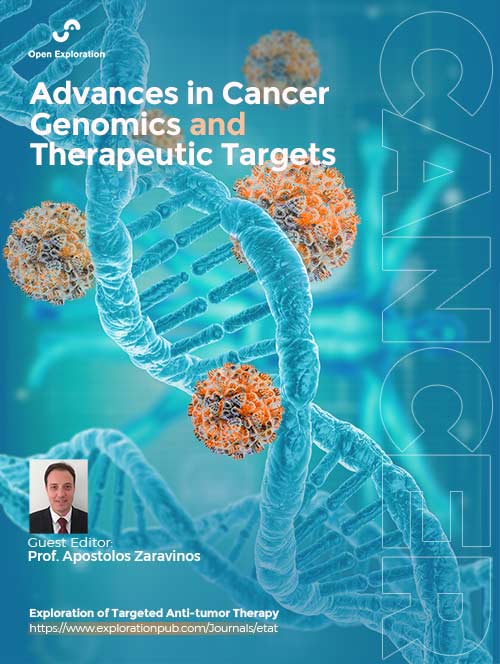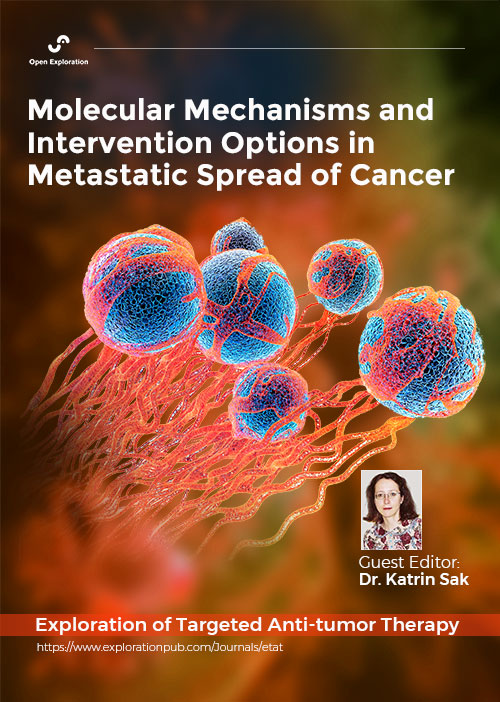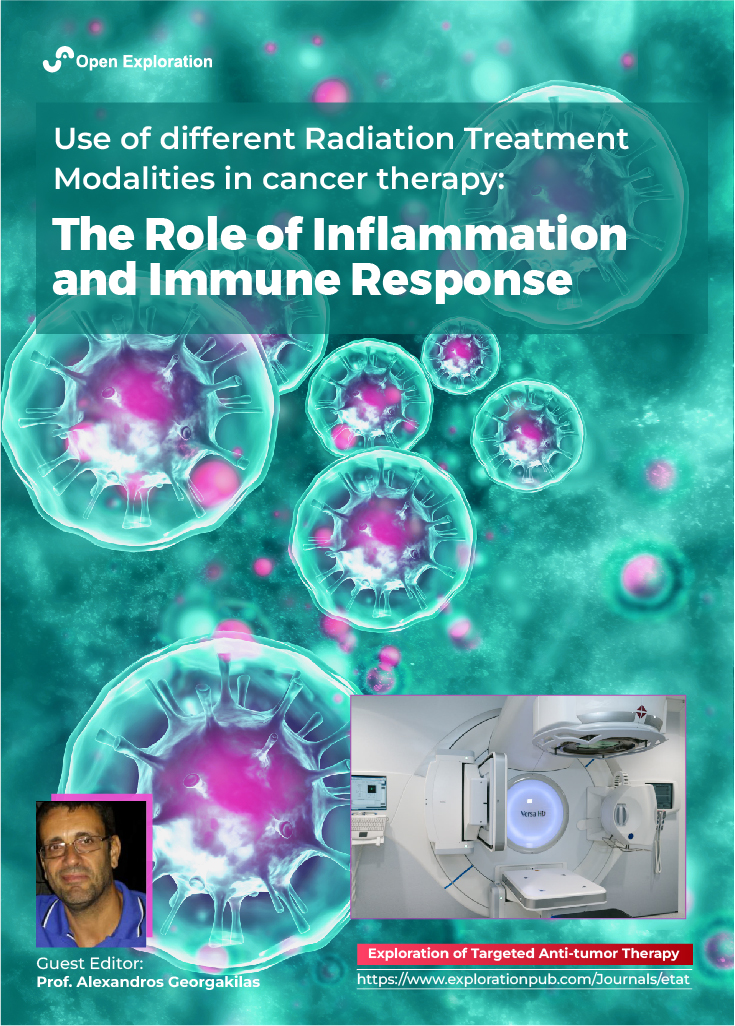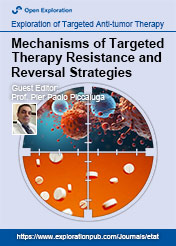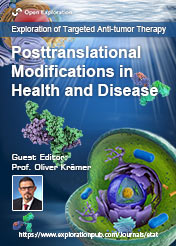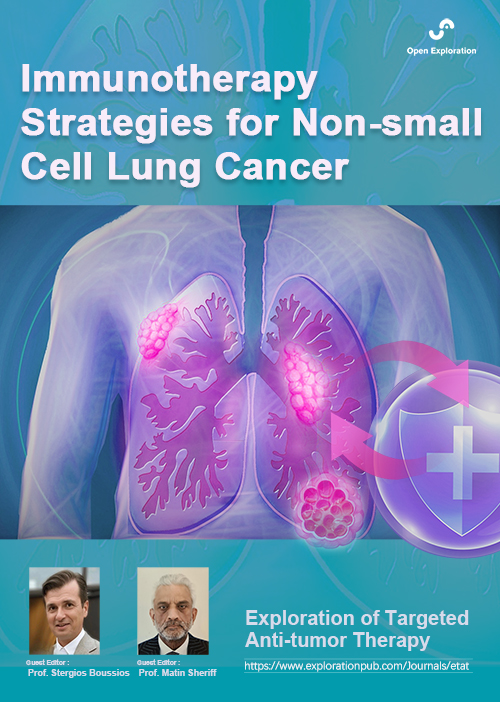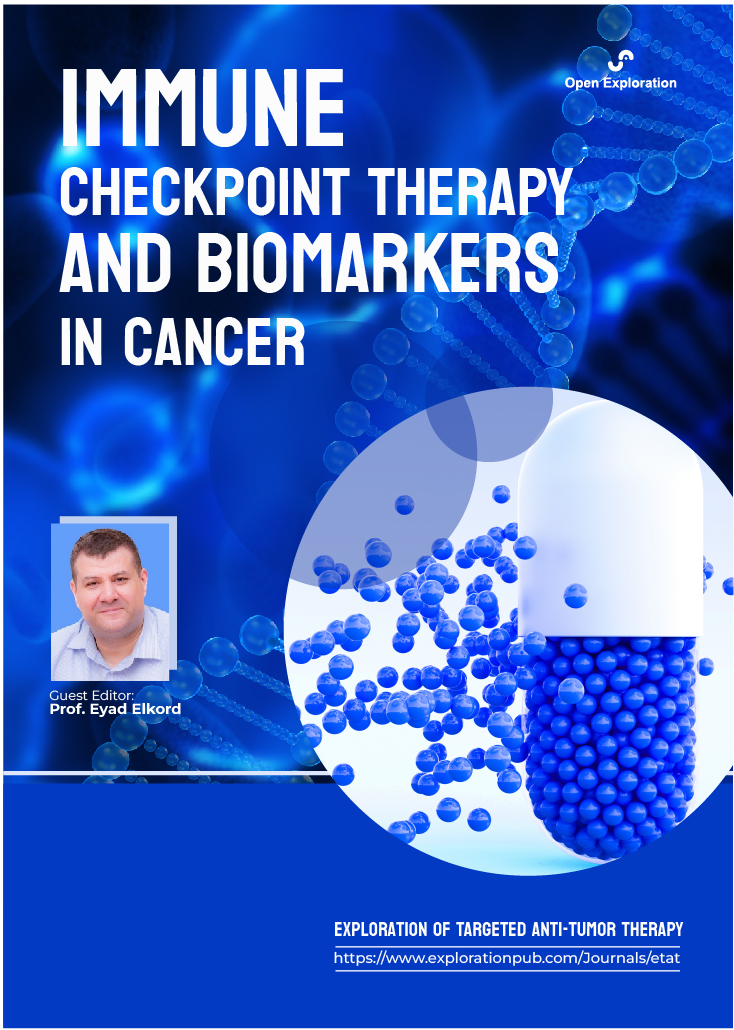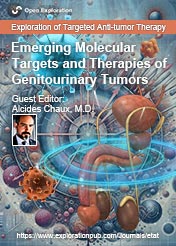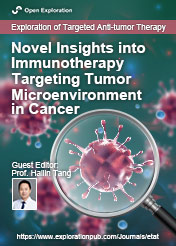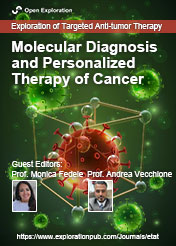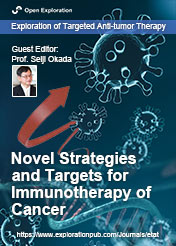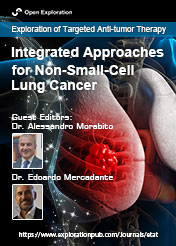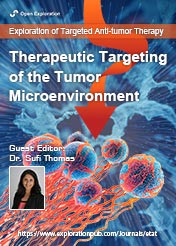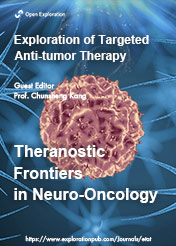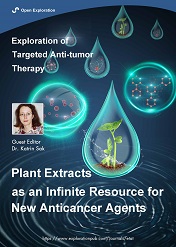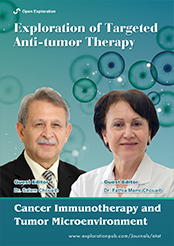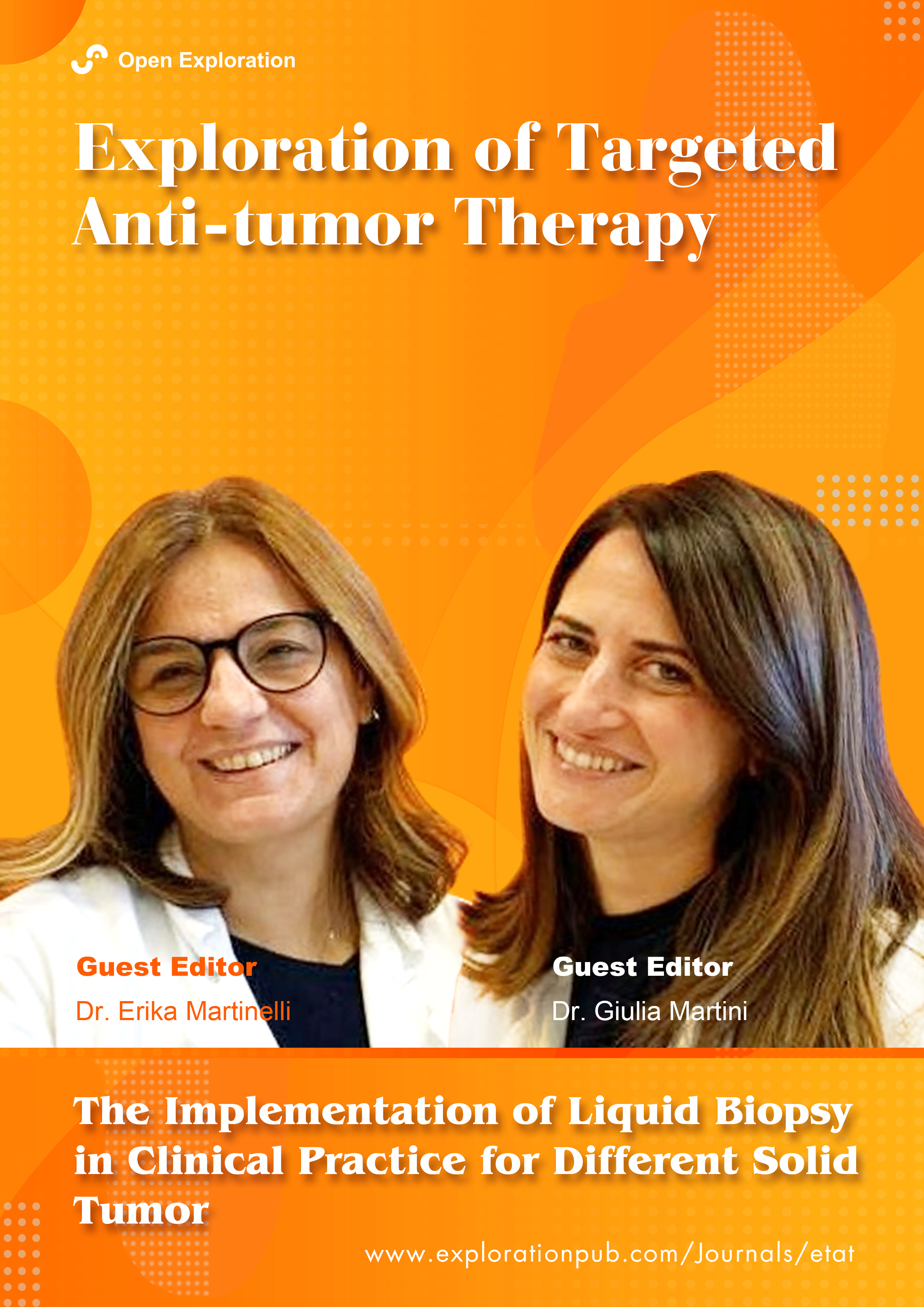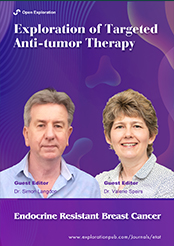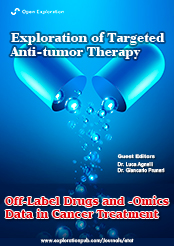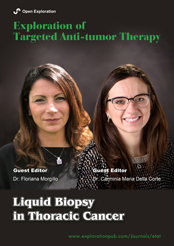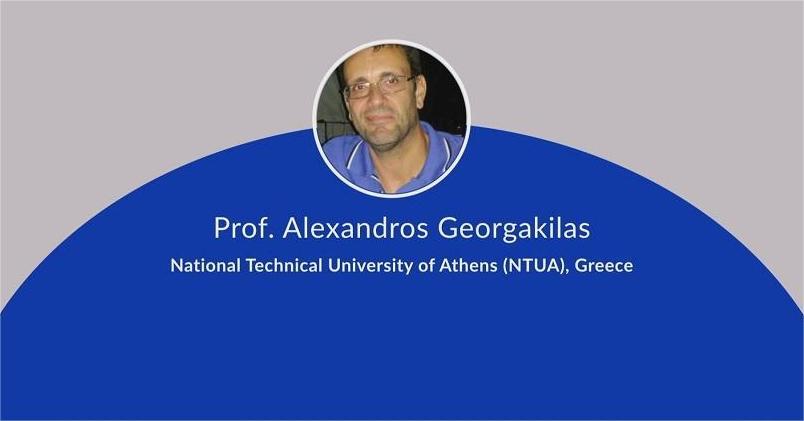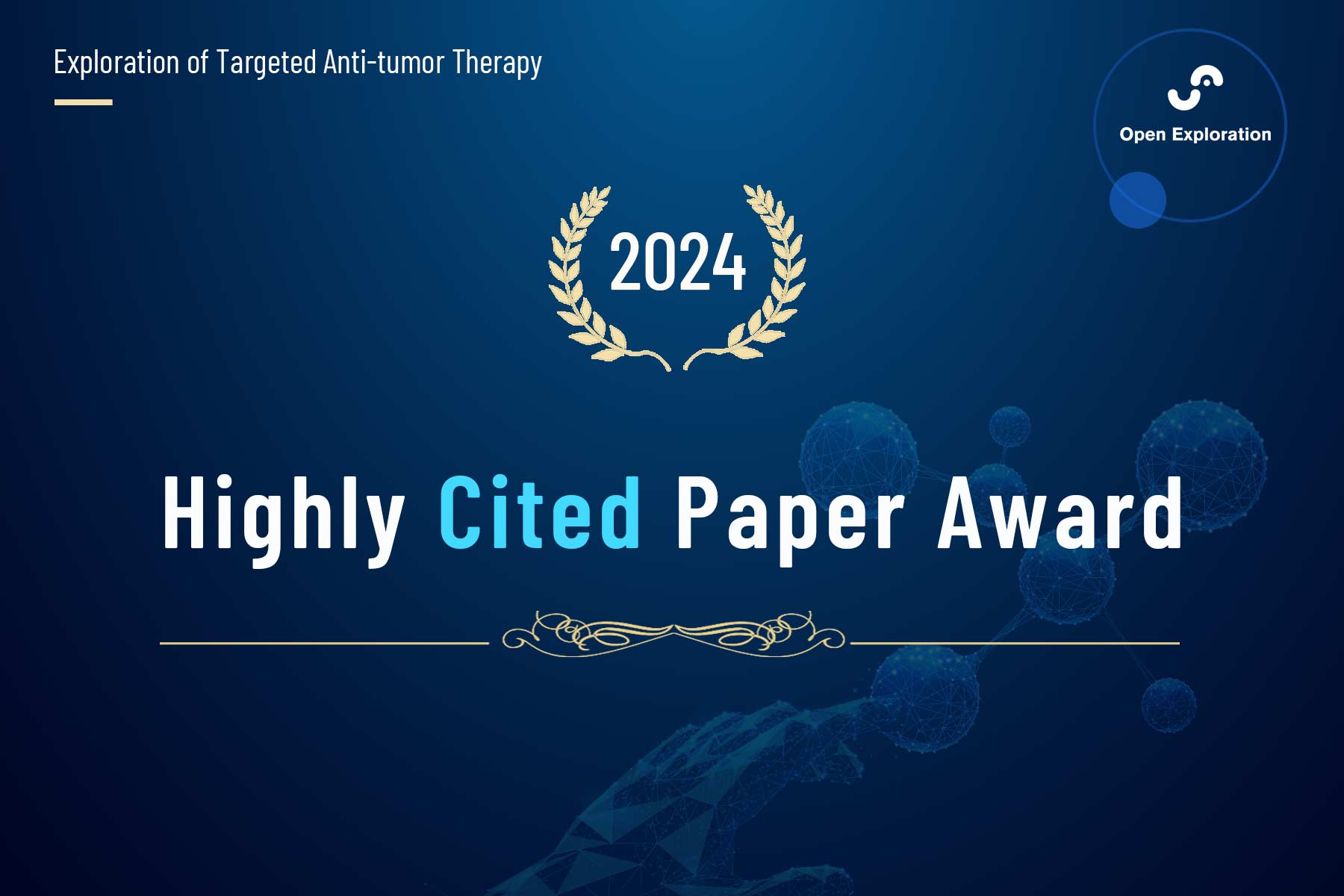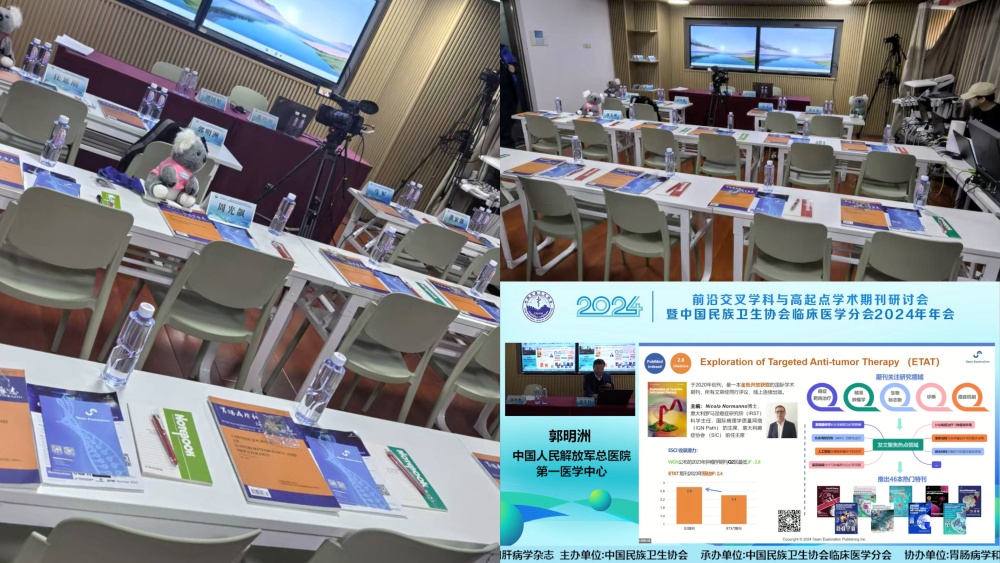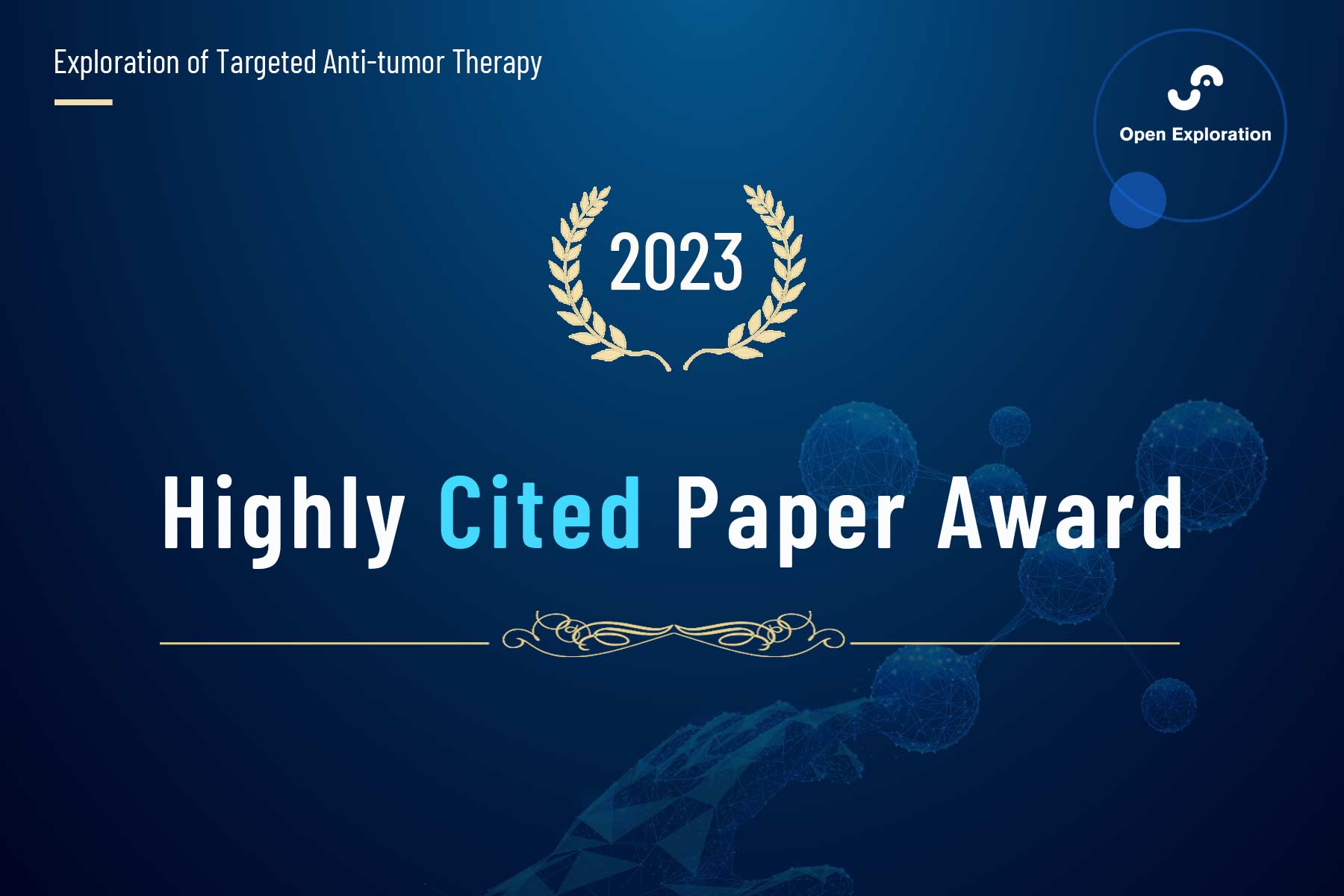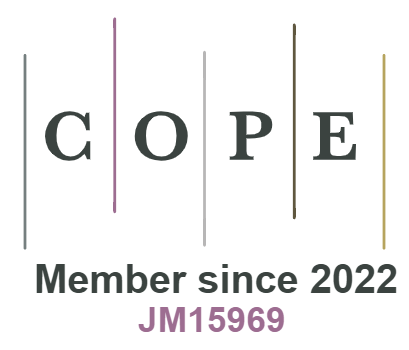-
Exploration of Targeted Anti-tumor Therapy
eISSN: 2692-3114EiC: Nicola Normanno, ItalyFrequency: Continuous PublicationAPC: $2,000 per article (See APC Waivers and Discounts)Publishing Model: Open AccessPeer Review Model: Single BlindIndexing & Archiving: PubMed/PMC, Scopus, Google Scholar, DOAJ, CAS, Dimensions, Portico, etc. The journal is also the member of COPE.Articles Harnessing the power of tumor-draining lymph nodes: unveiling predictive biomarkers for immune checkpoint inhibitorOpen AccessReviewWith the escalating application of immune checkpoint inhibitors (ICIs) in solid tumors, these therapies have demonstrated clinical benefits but remain hampered by relatively low response rates. Reli [...] Read more.Zihan Chen ... Lei WangPublished: May 13, 2025 Explor Target Antitumor Ther. 2025;6:1002315
Harnessing the power of tumor-draining lymph nodes: unveiling predictive biomarkers for immune checkpoint inhibitorOpen AccessReviewWith the escalating application of immune checkpoint inhibitors (ICIs) in solid tumors, these therapies have demonstrated clinical benefits but remain hampered by relatively low response rates. Reli [...] Read more.Zihan Chen ... Lei WangPublished: May 13, 2025 Explor Target Antitumor Ther. 2025;6:1002315
DOI: https://doi.org/10.37349/etat.2025.1002315
This article belongs to the special issue Novel Biomarkers in the Immunotherapy Era The development and applications of circulating tumour cells, circulating tumour DNA and other emerging biomarkers for early cancer detectionOpen AccessReviewDespite major improvements in cancer treatment, detection, and health promotion, the mortality rates of late-stage cancer remain high. This is a critical issue because a large proportion of cancer m [...] Read more.David Sinclair Thomas Junior ... Yong-Jie LuPublished: May 13, 2025 Explor Target Antitumor Ther. 2025;6:1002314
The development and applications of circulating tumour cells, circulating tumour DNA and other emerging biomarkers for early cancer detectionOpen AccessReviewDespite major improvements in cancer treatment, detection, and health promotion, the mortality rates of late-stage cancer remain high. This is a critical issue because a large proportion of cancer m [...] Read more.David Sinclair Thomas Junior ... Yong-Jie LuPublished: May 13, 2025 Explor Target Antitumor Ther. 2025;6:1002314
DOI: https://doi.org/10.37349/etat.2025.1002314 Neoantigen-based immunotherapy: advancing precision medicine in cancer and glioblastoma treatment through discovery and innovationOpen AccessReviewNeoantigen-based immunotherapy has emerged as a transformative approach in cancer treatment, offering precision medicine strategies that target tumor-specific antigens derived from genetic, transcri [...] Read more.Moawiah M Naffaa ... Valiko BegiashviliPublished: April 27, 2025 Explor Target Antitumor Ther. 2025;6:1002313
Neoantigen-based immunotherapy: advancing precision medicine in cancer and glioblastoma treatment through discovery and innovationOpen AccessReviewNeoantigen-based immunotherapy has emerged as a transformative approach in cancer treatment, offering precision medicine strategies that target tumor-specific antigens derived from genetic, transcri [...] Read more.Moawiah M Naffaa ... Valiko BegiashviliPublished: April 27, 2025 Explor Target Antitumor Ther. 2025;6:1002313
DOI: https://doi.org/10.37349/etat.2025.1002313 Cytokine-based immunotherapy for gastric cancer: targeting inflammation for tumor controlOpen AccessReviewEmerging cancer immunotherapy methods, notably cytokine-based ones that modify immune systems’ inflammatory reactions to tumor cells, may help slow gastric cancer progression. Cytokines, tiny sign [...] Read more.Mathan Muthu Chinakannu Marimuthu ... Hitesh ChopraPublished: April 26, 2025 Explor Target Antitumor Ther. 2025;6:1002312
Cytokine-based immunotherapy for gastric cancer: targeting inflammation for tumor controlOpen AccessReviewEmerging cancer immunotherapy methods, notably cytokine-based ones that modify immune systems’ inflammatory reactions to tumor cells, may help slow gastric cancer progression. Cytokines, tiny sign [...] Read more.Mathan Muthu Chinakannu Marimuthu ... Hitesh ChopraPublished: April 26, 2025 Explor Target Antitumor Ther. 2025;6:1002312
DOI: https://doi.org/10.37349/etat.2025.1002312 Viral infections and immune modulation in bladder cancer: implications for immunotherapyOpen AccessReviewThis review explores the intricate relationship between viral infections and Bacillus Calmette-Guerin (BCG) efficacy, emphasizing immune modulation mechanisms that may influence treatment outcomes. [...] Read more.Lívia Bitencourt Pascoal ... Leonardo O. ReisPublished: April 24, 2025 Explor Target Antitumor Ther. 2025;6:1002311
Viral infections and immune modulation in bladder cancer: implications for immunotherapyOpen AccessReviewThis review explores the intricate relationship between viral infections and Bacillus Calmette-Guerin (BCG) efficacy, emphasizing immune modulation mechanisms that may influence treatment outcomes. [...] Read more.Lívia Bitencourt Pascoal ... Leonardo O. ReisPublished: April 24, 2025 Explor Target Antitumor Ther. 2025;6:1002311
DOI: https://doi.org/10.37349/etat.2025.1002311
This article belongs to the special issue Comprehensive Immunotherapy of Solid Tumors Modulation of anti-tumour immunity by XPO1 inhibitorsOpen AccessReviewExportin-1 (XPO1) is a nuclear export protein that, when overexpressed, can facilitate cancer cell proliferation and survival and is frequently overexpressed or mutated in cancer patients. As such, [...] Read more.Jack G. Fisher ... Matthew D. BluntPublished: April 23, 2025 Explor Target Antitumor Ther. 2025;6:1002310
Modulation of anti-tumour immunity by XPO1 inhibitorsOpen AccessReviewExportin-1 (XPO1) is a nuclear export protein that, when overexpressed, can facilitate cancer cell proliferation and survival and is frequently overexpressed or mutated in cancer patients. As such, [...] Read more.Jack G. Fisher ... Matthew D. BluntPublished: April 23, 2025 Explor Target Antitumor Ther. 2025;6:1002310
DOI: https://doi.org/10.37349/etat.2025.1002310
This article belongs to the special issue Immune Checkpoint Therapy and Biomarkers in CancerSpecial Issues Artificial Intelligence Technology in Tumor Radiotherapy
Artificial Intelligence Technology in Tumor RadiotherapyProf. Tuan D. Pham
Submission Deadline: September 30, 2025
Published Articles: 0
 Liquid Biopsy: Has Already Changed the Clinical Decision-Making in Solid Tumors Treatment?
Liquid Biopsy: Has Already Changed the Clinical Decision-Making in Solid Tumors Treatment?Dr. Giulia Martini
Submission Deadline: June 30, 2025
Published Articles: 0
 Predictive and Prognostic Biomarkers in Cancer: Towards the Precision Medicine Era
Predictive and Prognostic Biomarkers in Cancer: Towards the Precision Medicine EraProf. Luca Falzone Dr. Antonio Rizzo Dr. Stefano Marletta Dr. Graziana Spoto
Submission Deadline: February 28, 2025
Published Articles: 2
 Potential Clinical Applications of Inorganic Nanomaterials in Cancer
Potential Clinical Applications of Inorganic Nanomaterials in CancerProf. Javier Reguera
Submission Deadline: April 30, 2025
Published Articles: 1
 Potential of Non-Coding RNAs in Cancer Research and Treatment
Potential of Non-Coding RNAs in Cancer Research and TreatmentProf. Francesco Bertoni Dr. Luciano Cascione
Submission Deadline: June 30, 2025
Published Articles: 0
 Novel Biomarkers in the Immunotherapy Era
Novel Biomarkers in the Immunotherapy EraDr. Carminia Maria Della Corte Dr. Floriana Morgillo Dr. Caterina De Rosa
Submission Deadline: June 30, 2025
Published Articles: 2
 Comprehensive Immunotherapy of Solid Tumors
Comprehensive Immunotherapy of Solid TumorsDr. Michela Valeria Rita Starace
Submission Deadline: October 31, 2024
Published Articles: 4
 Advances in Cancer Genomics and Therapeutic Targets
Advances in Cancer Genomics and Therapeutic TargetsProf. Apostolos Zaravinos
Submission Deadline: June 30, 2025
Published Articles: 2
 Molecular Mechanisms and Intervention Options in Metastatic Spread of Cancer
Molecular Mechanisms and Intervention Options in Metastatic Spread of CancerDr. Katrin Sak
Submission Deadline: June 30, 2025
Published Articles: 2
 Use of Different Radiation Treatment Modalities in Cancer Therapy: The Role of Inflammation and Immune Response
Use of Different Radiation Treatment Modalities in Cancer Therapy: The Role of Inflammation and Immune ResponseProf. Alexandros Georgakilas
Submission Deadline: May 31, 2025
Published Articles: 1
 Mechanisms of Targeted Therapy Resistance and Reversal Strategies
Mechanisms of Targeted Therapy Resistance and Reversal StrategiesProf. Pier Paolo Piccaluga
Submission Deadline: December 31, 2024
Published Articles: 3
 Cancer Epigenetics: Implications for Novel Therapeutic Strategies
Cancer Epigenetics: Implications for Novel Therapeutic StrategiesProf. Mingzhou Guo
Submission Deadline: February 01, 2025
Published Articles: 2
 Posttranslational Modifications in Health and Disease
Posttranslational Modifications in Health and DiseaseProf. Oliver Krämer
Submission Deadline: December 31, 2024
Published Articles: 4
 The Role of Bcl-2 Family Proteins in Cancer Progression and Their Relevance to Cancer Therapy
The Role of Bcl-2 Family Proteins in Cancer Progression and Their Relevance to Cancer TherapyDr. Donatella Del Bufalo Dr. Germain Gillet
Submission Deadline: November 30, 2021
Published Articles: 5
-
-
FocusMorePage View 2561May. 18, 2023
-
NewsletterWinners of Highly Cited Paper Award 2024
 Feb. 5, 2025ETAT at the "Frontier Interdisciplinary and High-Level Academic Journal Seminar"
Feb. 5, 2025ETAT at the "Frontier Interdisciplinary and High-Level Academic Journal Seminar" Dec. 30, 2024ETAT Journal’s Recent Exposure at Conferences
Dec. 30, 2024ETAT Journal’s Recent Exposure at Conferences Dec. 24, 2024MoreWinners of Highly Cited Paper Award 2023
Dec. 24, 2024MoreWinners of Highly Cited Paper Award 2023 Mar. 28, 2024
Mar. 28, 2024
